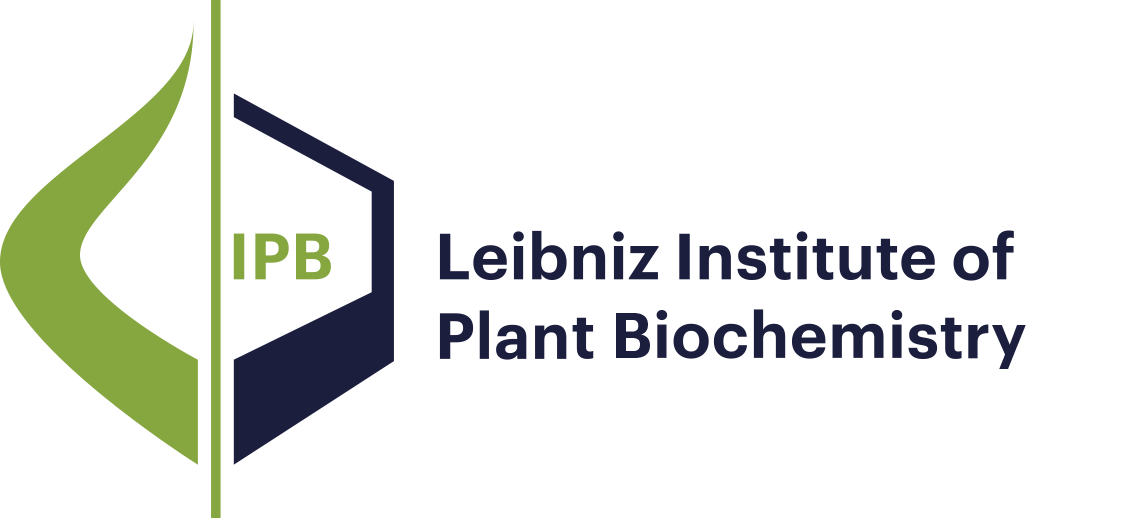Publications - Cell and Metabolic Biology
- Results as:
- Print view
- Endnote (RIS)
- BibTeX
- Table: CSV | HTML
Publications
Publications
Publications
This page was last modified on 27 Jan 2025 .
Research Mission and Profile
Molecular Signal Processing
Bioorganic Chemistry
Biochemistry of Plant Interactions
Cell and Metabolic Biology
Independent Junior Research Groups
Program Center MetaCom
Publications
Good Scientific Practice
Research Funding
Networks and Collaborative Projects
Symposia and Colloquia
Alumni Research Groups
Publications
Publications - Cell and Metabolic Biology
Publications
Salinity is a serious challenge to global agriculture and threatens human food security. Plant cells can respond to salt stress either by activation of adaptive responses, or by programmed cell death. The mechanisms deciding the respective response are far from understood, but seem to depend on the degree, to which mitochondria can maintain oxidative homeostasis. Using plant PeptoQ, a Trojan Peptoid, as vehicle, it is possible to transport a coenzyme Q10 (CoQ10) derivative into plant mitochondria. We show that salinity stress in tobacco BY-2 cells (Nicotiana tabacum L. cv Bright Yellow-2) can be mitigated by pretreatment with plant PeptoQ with respect to numerous aspects including proliferation, expansion, redox homeostasis, and programmed cell death. We tested the salinity response for transcripts from nine salt-stress related-genes representing different adaptive responses. While most did not show any significant response, the salt response of the transcription factor NtNAC, probably involved in mitochondrial retrograde signaling, was significantly modulated by the plant PeptoQ. Most strikingly, transcripts for the mitochondrial, Mn-dependent Superoxide Dismutase were rapidly and drastically upregulated in presence of the peptoid, and this response was disappearing in presence of salt. The same pattern, albeit at lower amplitude, was seen for the sodium exporter SOS1. The findings are discussed by a model, where plant PeptoQ modulates retrograde signalling to the nucleus leading to a strong expression of mitochondrial SOD, what renders mitochondria more resilient to perturbations of oxidative balance, such that cells escape salt induced cell death and remain viable.
Publications
Site-directed methods for the generation of genetic diversity are essential tools in the field of directed enzyme evolution. The Golden Gate cloning technique has been proven to be an efficient tool for a variety of cloning setups. The utilization of restriction enzymes which cut outside of their recognition domain allows the assembly of multiple gene fragments obtained by PCR amplification without altering the open reading frame of the reconstituted gene. We have developed a protocol, termed Golden Mutagenesis that allows the rapid, straightforward, reliable and inexpensive construction of mutagenesis libraries. One to five amino acid positions within a coding sequence could be altered simultaneously using a protocol which can be performed within one day. To facilitate the implementation of this technique, a software library and web application for automated primer design and for the graphical evaluation of the randomization success based on the sequencing results was developed. This allows facile primer design and application of Golden Mutagenesis also for laboratories, which are not specialized in molecular biology.
Publications
BackgroundSimilarly to the legume-rhizobia symbiosis, the arbuscular mycorrhiza interaction is controlled by autoregulation representing a feedback inhibition involving the CLAVATA1-like receptor kinase NARK in shoots. However, little is known about signals and targets down-stream of NARK. To find NARK-related transcriptional changes in mycorrhizal soybean (Glycine max) plants, we analyzed wild-type and two nark mutant lines interacting with the arbuscular mycorrhiza fungus Rhizophagus irregularis.ResultsAffymetrix GeneChip analysis of non-inoculated and partially inoculated plants in a split-root system identified genes with potential regulation by arbuscular mycorrhiza or NARK. Most transcriptional changes occur locally during arbuscular mycorrhiza symbiosis and independently of NARK. RT-qPCR analysis verified nine genes as NARK-dependently regulated. Most of them have lower expression in roots or shoots of wild type compared to nark mutants, including genes encoding the receptor kinase GmSIK1, proteins with putative function as ornithine acetyl transferase, and a DEAD box RNA helicase. A predicted annexin named GmAnnx1a is differentially regulated by NARK and arbuscular mycorrhiza in distinct plant organs. Two putative CCAAT-binding transcription factor genes named GmNF-YA1a and GmNF-YA1b are down-regulated NARK-dependently in non-infected roots of mycorrhizal wild-type plants and functional gene analysis confirmed a positive role for these genes in the development of an arbuscular mycorrhiza symbiosis.ConclusionsOur results indicate GmNF-YA1a/b as positive regulators in arbuscular mycorrhiza establishment, whose expression is down-regulated by NARK in the autoregulated root tissue thereby diminishing subsequent infections. Genes regulated independently of arbuscular mycorrhization by NARK support an additional function of NARK in symbioses-independent mechanisms.
This page was last modified on 27 Jan 2025 .

